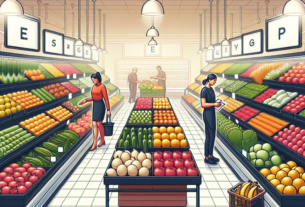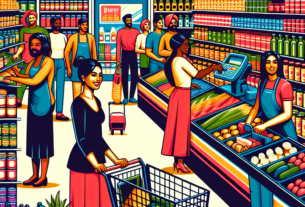Introduction
The grocery industry has undergone significant changes in recent years, with the rise of e-commerce, changing consumer preferences, and increased competition. As we look towards the future, it’s important to consider how grocery branding will evolve in the next decade. In this report, we will explore the trends, challenges, and opportunities that will shape the future of grocery branding.
Current State of the Grocery Industry
According to a report by CulinaryCoverage.com, the global grocery retail industry is projected to reach $12 trillion by 2030. This growth is driven by factors such as population growth, urbanization, and rising disposable incomes. In 2025, the industry is expected to be worth $8 trillion, with Asia Pacific leading the growth.
Market Share and Key Players
Currently, the grocery industry is dominated by a few key players, including Walmart, Amazon, and Alibaba. These companies have significant market share and are constantly innovating to stay ahead of the competition. In 2025, experts predict that new players will enter the market, challenging the dominance of the existing giants.
Consumer Trends
Consumer preferences are also changing, with a growing demand for organic, locally sourced, and sustainable products. Retailers that can cater to these preferences will have a competitive edge in the future. Additionally, technology is playing a larger role in the grocery shopping experience, with more consumers opting for online shopping and delivery services.
Challenges Facing the Grocery Industry
Despite the growth opportunities, the grocery industry also faces several challenges. One of the biggest challenges is the increasing competition from e-commerce giants like Amazon, who are disrupting traditional brick-and-mortar retailers. Additionally, rising costs, labor shortages, and supply chain disruptions are putting pressure on grocery brands to innovate and adapt.
Financials and Profit Margins
Profit margins in the grocery industry are notoriously low, with retailers typically operating on thin margins of 1-3%. This makes it challenging for brands to invest in innovation and growth. In order to remain competitive, grocery brands will need to find new ways to increase efficiency and reduce costs.
Supply Chain Issues
The COVID-19 pandemic exposed vulnerabilities in the grocery supply chain, with disruptions to manufacturing, distribution, and logistics. As a result, many grocery brands are reevaluating their supply chain strategies to ensure resilience and agility in the face of future disruptions.
Opportunities for Grocery Branding
Despite the challenges, there are also significant opportunities for grocery brands to differentiate themselves and attract customers. By focusing on sustainability, innovation, and customer experience, brands can carve out a unique position in the market and build loyalty among consumers.
Personalization and Customization
One opportunity for grocery brands is to offer personalized and customized products and services. By leveraging data and technology, brands can tailor their offerings to meet the specific needs and preferences of individual customers. This can help drive customer loyalty and increase sales.
Omni-Channel Marketing
Another opportunity for grocery brands is to embrace omni-channel marketing, which integrates online and offline channels to create a seamless shopping experience for customers. By offering a variety of ways for customers to shop, brands can reach a wider audience and drive sales.
The Future of Grocery Branding
In the next decade, grocery branding is likely to undergo significant changes as brands adapt to new technologies, consumer preferences, and competitive pressures. To succeed in this evolving landscape, grocery brands will need to be agile, innovative, and customer-focused.
Technology and Automation
One key trend that will shape the future of grocery branding is the increasing use of technology and automation. Brands that invest in technologies like artificial intelligence, robotics, and data analytics will be able to streamline operations, reduce costs, and improve the customer experience.
Sustainability and Ethical Practices
Another important trend is the growing demand for sustainability and ethical practices in the grocery industry. Consumers are increasingly concerned about the environmental and social impact of their purchases, and brands that can demonstrate a commitment to sustainability will have a competitive advantage.
Conclusion
In conclusion, the future of grocery branding will be shaped by a combination of technological advancements, changing consumer preferences, and competitive pressures. Brands that can adapt to these trends and innovate in response to new challenges will be well-positioned for success in the next decade. By focusing on sustainability, personalization, and omni-channel marketing, grocery brands can differentiate themselves and build loyalty among customers.



